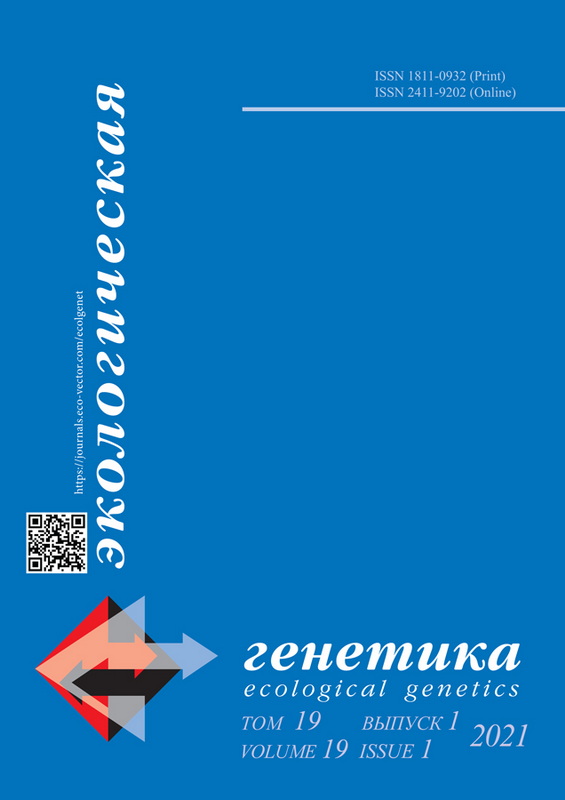Searching for regulators that interact with BELL1 transcription factor and control the legume-rhizobial symbiosis development
- Authors: Dolgikh A.V.1,2, Dolgikh E.A.1
-
Affiliations:
- All-Russia Research Institute for Agricultural Microbiology
- Saint Petersburg State University
- Issue: Vol 19, No 1 (2021)
- Pages: 37-45
- Section: Genetic basis of ecosystems evolution
- Submitted: 25.11.2020
- Accepted: 30.03.2021
- Published: 15.03.2021
- URL: https://journals.eco-vector.com/ecolgenet/article/view/51489
- DOI: https://doi.org/10.17816/ecogen51489
- ID: 51489
Cite item
Abstract
The development of nitrogen-fixing nodule, which is formed during legume-rhizobial symbiosis, requires the involvement of cell cycle regulators, phytohormones and homeodomain-containing transcription factors as well as other organogenesis processes. Along with homedomain-containing transcription factors from KNOX family, which participation in the control of nodule development has been studied recently, the role of transcription factors from BELL family in this process remains under-explored. At the same time, transcriptomic data for legumes shows an increase in the expression levels of genes encoding proteins of this family in the plant roots inoculated by Rhizobium. In this work we performed screening of сDNA library, which was generated from inoculated pea roots, using BELL1 protein in yeast two-hybrid system. As a result, we detected two interacting proteins, which are highly interesting for future examination. In the first case we discovered interaction between BELL1 and LysM-containing receptor-like kinase LYK9. Another identified regulator interacting with BELL1 became the glycine-rich protein A3, which may be involved in the regulation of defense reactions in plants and their resistance to phytopathogens. Transcriptomic analysis for pea roots has revealed high expression level of gene, which encodes this protein in the nodules, that may demonstrate its important role in symbiosis regulation.
Full Text
About the authors
Alexandra Vyacheslavovna Dolgikh
All-Russia Research Institute for Agricultural Microbiology; Saint Petersburg State University
Email: sqshadol@gmail.com
ORCID iD: 0000-0003-1845-9701
Scopus Author ID: 5719038282
ResearcherId: ABC-2930-2020
engineer
Russian Federation, 3 Podbelsky chausse, Pushkin, Saint Petersburg, 196608; Saint PetersburgElena A. Dolgikh
All-Russia Research Institute for Agricultural Microbiology
Author for correspondence.
Email: dol2helen@yahoo.com
ORCID iD: 0000-0002-5375-0943
SPIN-code: 4453-2060
Scopus Author ID: 6603496335
ResearcherId: G-6363-2017
Dr. Sci. (Biol)
Russian Federation, 3 Podbelsky chausse, Pushkin, Saint Petersburg, 196608References
- Goodstein DM, Shu S, Howson R, et al. Phytozome: a comparative platform for green plant genomics. Nucleic Acids Res. 2011/11/22. 2012;40(Database issue): D1178–86. doi: 10.1093/nar/gkr944
- Chen H, Banerjee AK, Hannapel DJ. The tandem complex of BEL and KNOX partners is required for transcriptional repression of ga20ox1. Plant J. 2004;38(2):276–84. doi: 10.1111/j.1365-313X.2004.02048.x
- Azarakhsh M, Kirienko AN, Zhukov VA, et al. KNOTTED1-LIKE HOMEOBOX 3: a new regulator of symbiotic nodule development. J Exp Bot. 2015;66(22):7181–95. doi: 10.1093/jxb/erv414
- Di Giacomo E, Sestili F, Iannelli MA, et al. Characterization of KNOX genes in Medicago truncatula. Plant Mol Biol. 2008;67(1–2): 135–50. doi: 10.1007/s11103-008-9307-7
- Azarakhsh M, Lebedeva MA, Lutova LA. Identification and Expression Analysis of Medicago truncatula Isopentenyl Transferase Genes (IPTs) Involved in Local and Systemic Control of Nodulation. Front Plant Sci. 2018;9:1–11. doi: 10.3389/fpls.2018.00304
- Schiessl K, Lilley JLS, Lee T, et al. NODULE INCEPTION Recruits the Lateral Root Developmental Program for Symbiotic Nodule Organogenesis in Medicago truncatula. Curr Biol. 2019;29(21): 3657–3668.e5. doi: 10.1016/j.cub.2019.09.005
- Soyano T, Shimoda Y, Kawaguchi M, Hayashi M. A shared gene drives lateral root development and root nodule symbiosis pathways in Lotus. Science. 2019;366(6468):1021–1023. doi: 10.1126/science.aax2153
- Faulkner C. Receptor-mediated signaling at plasmodesmata. Front Plant Sci. 2013;4:521. doi: 10.3389/fpls.2013.00521
- Dolgikh AV, Rudaya ES, Dolgikh EA. Identification of BELL Transcription Factors Involved in Nodule Initiation and Development in the Legumes Pisum sativum and Medicago truncatula. Plants. 2020;9(12):1808. doi: 10.3390/plants9121808
- Katoh K, Misawa K, Kuma K, Miyata T. MAFFT: a novel method for rapid multiple sequence alignment based on fast Fourier transform. Nucleic Acids Res. 2002;30(14):3059–66. doi: 10.1093/nar/gkf436
- Yu G, Smith DK, Zhu H, et al. ggtree: an r package for visualization and annotation of phylogenetic trees with their covariates and other associated data. Methods Ecol Evol. 2017;8(1):28–36. doi: 10.1111/2041-210X.12628
- Bono J-J, Fliegmann J, Gough C, Cullimore J. Expression and function of the Medicago truncatula lysin motif receptor-like kinase (LysM-RLK) gene family in the legume–rhizobia symbiosis [Internet]. The Model Legume Medicago truncatula. 2020. p. 439–47. (Wiley Online Books). DOI: https://DOI.org/10.1002/9781119409144.ch55
- Gietz RD, Schiestl RH. Frozen competent yeast cells that can be transformed with high efficiency using the LiAc/SS carrier DNA/PEG method. Nat Protoc. 2007;2(1):1–4. doi: 10.1038/nprot.2007.17
- Beckmann BM. RNA interactome capture in yeast. Methods. 2017;118–119:82–92. doi: 10.1016/j.ymeth.2016.12.008
- Kreplak J, Madoui M-A, Cápal P, et al. A reference genome for pea provides insight into legume genome evolution. Nat Genet. 2019;51(9):1411–1422. doi: 10.1038/s41588-019-0480-1
- Leppyanen IV, Shakhnazarova VY, Shtark OY, et al. Receptor-Like Kinase LYK9 in Pisum sativum L. Is the CERK1-Like Receptor that Controls Both Plant Immunity and AM Symbiosis Development. Int J Mol Sci. 2017;19(1):8. doi: 10.3390/ijms19010008
- Tang H, Krishnakumar V, Bidwell S, et al. An improved genome release (version Mt4.0) for the model legume Medicago truncatula. BMC Genomics. 2014;15(1):312. doi: 10.1186/1471-2164-15-312
- Goldberg T, Hecht M, Hamp T, et al. LocTree3 prediction of localization. Nucleic Acids Res. 2014;42(W1): W350–355. doi: 10.1093/nar/gku396
- Alves-Carvalho S, Aubert G, Carrère S, et al. Full-length de novo assembly of RNA-seq data in pea (Pisum sativum L.) provides a gene expression atlas and gives insights into root nodulation in this species. Plant J. 2015;84(1):1–19.
- Kirienko AN, Porozov YB, Malkov NV., et al. Role of a receptor-like kinase K1 in pea Rhizobium symbiosis development. Planta. 2018;248(5):1101–1120. doi: 10.1007/s00425-018-2944-4
- Cheval C, Samwald S, Johnston MG, et al. Chitin perception in plasmodesmata characterizes submembrane immune-signaling specificity in plants. Proc Natl Acad Sci. 2020;117(17):9621–9629. doi: 10.1073/pnas.1907799117
- Mangeon A, Junqueira RM, Sachetto-Martins G. Functional diversity of the plant glycine-rich proteins superfamily. Plant Signal Behav. 2010;5(2):99–104. doi: 10.4161/psb.5.2.10336
- Nakahara KS, Kitazawa H, Atsumi G, Choi SH, Suzuki Y, Uyeda I. Screening and analysis of genes expressed upon infection of broad bean with Clover yellow vein virus causing lethal necrosis. Virol J. 2011;8(1):355. doi: 10.1186/1743-422X-8-355
Supplementary files














